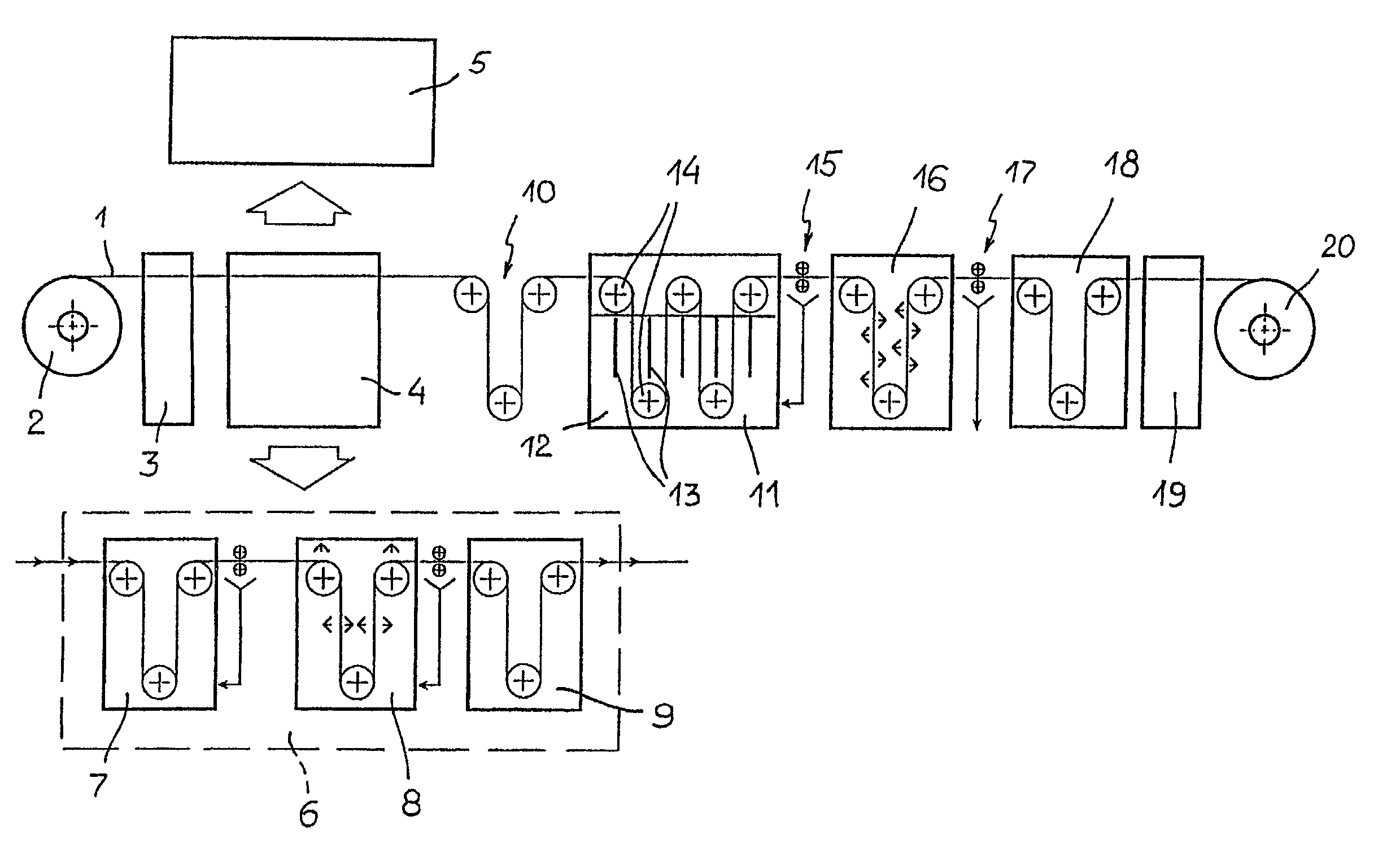Electrochemical method for forming an inorganic covering layer on a surface of a copper material
- Summary
- Abstract
- Description
- Claims
- Application Information
AI Technical Summary
Benefits of technology
Problems solved by technology
Method used
Image
Examples
example 2
[0029] The same apparatus, cell and copper material of example 1 were used: the process and cell parameters are summarized in table II.
2 TABLE II Electrolyte NaOH.sub.aq 30% w / w bath temperature 90 .+-. 2.degree. C. .vertline. anode-cathode distance 50 mm cell potential 0.65 V Current 1.0 A anodic current density 0.5 A / dm.sup.2 contact time 20 seconds pre-conditioning time 40 seconds strip speed 30 cm / min
[0030] A very uniform and adherent layer was obtained (named CB3 for comparative purposes) having a brown colour.
example 3
[0031] The same apparatus, cell and copper material of example 1 were used: the process and cell parameters are summarized in table III.
[0032] A very uniform and adherent layer was obtained (named CB4 for comparative purposes) having a deep black colour and velvety aspect.
3 TABLE III Electrolyte NaOH.sub.aq 30% w / w bath temperature 90 .+-. 2.degree. C. anode-cathode distance 50 mm cell potential 2 V Current 30 A anodic current density 15 A / dm.sup.2 contact time 20 seconds pre-conditioning time 40 seconds strip speed 30 cm / min
example 4
[0033] All samples produced in the above reported examples 1 to 3 were tested for determining chemical composition (by X-ray diffractometry and coulometry), thickness (by coulometric analysis performed by reducing the superficial copper oxide, at a constant current density, in a Na.sub.2CO.sub.3 0.1 M solution, according to the method extensively described in A. Billi, E. Marinelli, L. Pedocchi, G. Rovida: "Surface characterization and corrosion behaviour of Cu--Cu--.sub.2O--CuO system", published on the Proceedings of the 11.sup.th International Corrosion Congress, Florence, 1990, Vol. 5, p. 129, Edit Associazione Italiana di Metallurgia Milano, Italy 1990), crystalline structure (by SEM micrography and X-ray diffraction analysis): main test results are summarized in table IV.
4 TABLE IV CEB2 CEB3 CEB4 Chemical Cu.sub.2O Cu.sub.2O Cu.sub.2O composition (traces of CuO) (traces of CuO) (traces of CuO) Thickness 0.180 .mu.m 0.120 .mu.m 0.200 .mu.m (by coulometry) Crystalline form cubic...
PUM
| Property | Measurement | Unit |
|---|---|---|
| Angle | aaaaa | aaaaa |
| Angle | aaaaa | aaaaa |
| Temperature | aaaaa | aaaaa |
Abstract
Description
Claims
Application Information
 Login to View More
Login to View More - R&D Engineer
- R&D Manager
- IP Professional
- Industry Leading Data Capabilities
- Powerful AI technology
- Patent DNA Extraction
Browse by: Latest US Patents, China's latest patents, Technical Efficacy Thesaurus, Application Domain, Technology Topic, Popular Technical Reports.
© 2024 PatSnap. All rights reserved.Legal|Privacy policy|Modern Slavery Act Transparency Statement|Sitemap|About US| Contact US: help@patsnap.com










